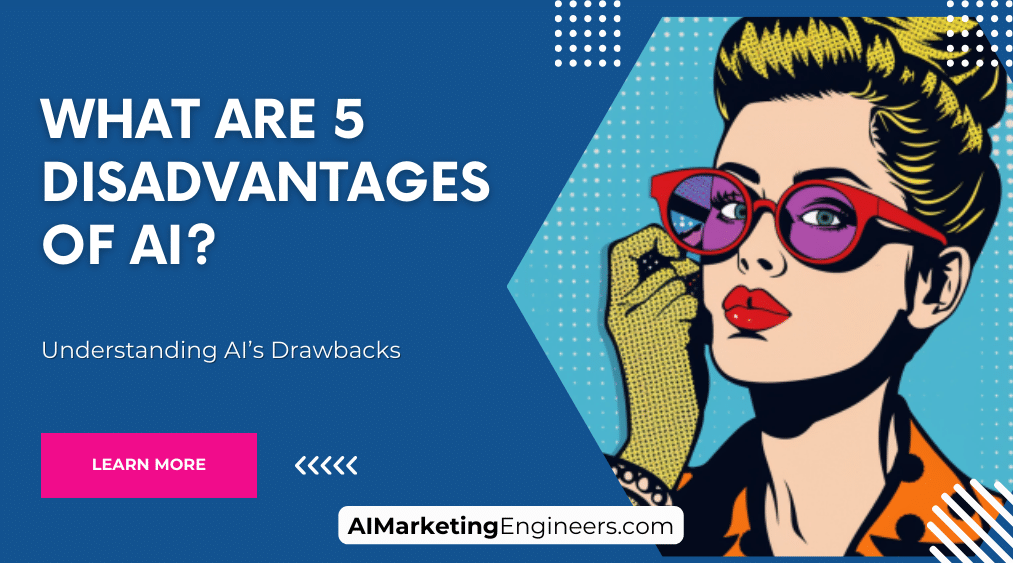Key Takeaways
✅ Machine learning algorithms aren't just fancy math; they're the reason your email can tell spam from important stuff. By gobbling up data and learning as they go, these algorithms are slowly but surely making our tech think smarter. Get the scoop on how they're upgrading everything from your smartphone to healthcare.
✅ Ever heard of supervised or unsupervised learning? Think of them as two schools of thought in the world of algorithms—one with a clear right answer and the other exploring data like a detective. Dive into why choosing the right type matters more than you think for businesses big and small.
✅ The best decisions come from great data, and it's the same with algorithms. But beware, it's easy to bungle things up with bad data or the wrong choice of algorithm. We'll guide you through picking the champions and avoiding the lemons.

Introduction
Ever seen a machine have an "aha!" moment? With machine learning algorithms, it's an everyday thing. Picture a world where computers learn from their mistakes, get better without being told how, and make decisions as sharp as a tack. That's the world we're entering, and it's all thanks to these clever bits of code.
Imagine having a crystal ball that not only predicts what's going to happen but also adapts when things change. That's machine learning in a nutshell. But don't just take my word for it—keep reading, and I'll show you not only how these algorithms work but how they're changing the rules of the game in every industry out there. You're not here to just learn—you're here to master. And guess what? That's exactly what we're going to do.
By the end of this, you'll have more than just knowledge. You'll have the power to use these algorithms to your advantage, whether it's boosting sales, cutting down costs, or just making life a little easier. So, shall we get started on this adventure into the heart of AI?
Top Statistics
| Statistic | Commentary |
|---|---|
| Global AI Market Growth: Expected to grow from $387.45 billion in 2022 to $1,394.30 billion by 2029. (Source: Fortune Business Insights, 2022) | The eye-opening expansion signals a transformative shift in global industries where AI is becoming the norm, not the exception. Are you prepared for this change? |
| Machine Learning Market Surge: Projected CAGR of 38.8% from $15.44 billion in 2021 to $209.91 billion by 2029. (Source: Fortune Business Insights, 2022) | Surge? More like a rocket! Machine Learning isn't just buzzing; it's redefining how we interpret data and make decisions. Can you imagine what this will mean for job opportunities and innovations? |
| Top Industry Adopters: Healthcare, finance, retail, and manufacturing lead in ML use. (Source: Statista, 2021) | These industries are at the forefront, harnessing ML for smarter solutions and efficiency. But think about it: how will this affect the quality of services we get every day? |
| Businesses Implementing AI: 54% worldwide, with significant increases in business outcomes. (Source: Forbes, 2021) | Over half the businesses out there are already AI-friendly. If more than half are doing it, what does that tell you about where we're headed? |
| Healthcare Industry Growth: ML adoption in healthcare expected to rise at a 41.4% CAGR. (Source: Fortune Business Insights, 2022) | Now, this is where it gets personal. With healthcare advancing rapidly, what breakthroughs might we see in our own longevity and well-being? |
Evolution of Machine Learning
The journey of machine learning began with rudimentary concepts of pattern recognition and has since progressed to sophisticated algorithms capable of complex tasks such as facial recognition and speech understanding. This evolution signifies a pivotal realization: computers can learn from data without explicit programming, leading to the development of increasingly advanced models that mimic human learning processes.
Supervised Learning: Guided Decision Making
Supervised learning algorithms, like Decision Trees and Support Vector Machines, excel in tasks where labeled data is available, enabling them to make informed predictions based on examples provided during training. For example, in email classification, these algorithms distinguish between spam and non-spam messages by learning from labeled data. Regression algorithms such as Linear Regression are also effective in tasks like predicting house prices by identifying patterns in labeled datasets.
Unsupervised Learning: Finding Patterns in Unlabeled Data
Unsupervised learning algorithms, such as K-Means clustering, operate in scenarios where data lacks labels, enabling them to identify underlying structures or patterns within the dataset without predefined categories. By clustering data points based on similarities, these algorithms reveal insights into data relationships, facilitating deeper understanding without the need for explicit labeling.
Feature Selection and Model Evaluation
Feature selection and engineering are crucial steps in ensuring the effectiveness of machine learning models, as they involve identifying and incorporating relevant data features for accurate predictions. Additionally, model evaluation techniques like cross-validation assess the model's performance, guarding against overfitting and ensuring its ability to generalize to unseen data, thus enhancing reliability and robustness.
Combining Strengths for Enhanced Performance
Ensemble learning techniques, such as Random Forest and AdaBoost, harness the collective strengths of multiple models to improve prediction accuracy. By aggregating predictions from diverse models, ensemble methods mitigate individual model weaknesses, resulting in more robust and reliable decision-making. This collaborative approach enhances the overall performance and effectiveness of machine learning systems.
The Future of AI: Deep Learning and Ethical Considerations
Deep learning, driven by artificial neural networks inspired by the human brain, represents a significant advancement in AI capabilities, enabling complex tasks like image recognition and language translation. However, as AI integration becomes more pervasive, ethical considerations regarding bias, fairness, and interpretability become increasingly critical. Responsible AI development requires a careful balance between technological innovation and ethical principles to ensure that AI benefits society while upholding moral standards and promoting human well-being.
AI Marketing Engineers Recommendation
Recommendation 1: Embrace Personalization through Machine Learning Algorithms: Machine learning is like the art of creating a personal touch at scale. By tapping into data – what customers click on, buy, or even ignore – machine learning algorithms help you tailor experiences that speak directly to individual needs. So, how about using those insights to customize your marketing messages? Personalize your emails, website content, and even product recommendations. Businesses that get personal can see a jump in sales and customer loyalty. Are you ready to make your customers feel like you really know them?
Recommendation 2: Leverage Predictive Analytics to Anticipate Customer Behaviors: Nowadays, looking into the future isn't just for fortune-tellers. Predictive analytics, powered by machine learning, allows you to peek into potential customer behaviors and trends. Curious about what they'll buy next? Or when they might churn? This tech can give you a heads-up. By analyzing past interactions and outcomes, you're now equipped to craft strategies that keep your customers engaged just right. Seeing an uptick in demand for a product before it happens? That's like having a crystal ball in your marketing toolkit. Are you ready to predict and profit?
Recommendation 3: Implement Chatbots for Enhanced Customer Service Experiences: Ever had a chat with a robot? Chatbots have come a long way, and they're getting smarter thanks to machine learning. They learn from every interaction, becoming more helpful and more human-like. Consider deploying a chatbot on your site or in your app. Not only can they provide instant support 24/7, but they also gather valuable insights with each conversation. Imagine boosting customer satisfaction while gathering data that make your services even better. Isn’t it time your customer support got an AI boost?
Relevant Links
- Unleash Your Creativity: Skyrocket Your Marketing Content with ChatGPT
- Maximize Your Digital Strategy: Top AI Tools Dominating 2024
- Innovate or Stagnate: Embracing AI to Revolutionize Marketing
- Drive Growth with Data: Top AI Analytics Platforms Reviewed
- Skyrocket SEO Success: Discover 2024's Advanced Strategies
Conclusion
So, where does all this chatter about machine learning algorithms leave us? We've taken a stroll down the vast garden of AI, peeking at everything from the rudimentary tools of decision trees to the complex neural networks that mimic our own brain's wiring. But why does it matter? Well, these algorithms are more than just lines of code—they're the craftsmen behind the magic of AI that's slowly seeping into every bit of our daily lives.
Remember those types of algorithms—supervised and unsupervised? They're like the two hands of AI, each playing a part in crafting the future. And as we wade deeper into the world where terms like overfitting and cross-validation aren't just theoretical concepts but pivotal in decision-making, we can't help but realize we're standing at the brink of a revolution.
Our journey outlined not just the mechanics but also the ethical tightrope these algorithms walk on—fairness, privacy, and the quest for responsible AI. It's about understanding that the machines we build reflect us, our biases, and our values.
So, now what? For the curious minds, there are doors waiting to be opened—with resources like the books we mentioned—and for the skeptics, there's a world to observe and question as AI evolves. But one thing's for sure: the future of AI is intertwined with our willingness to learn, adapt, and infuse our most human qualities into the machines of tomorrow. Are we ready to ride that wave? And more importantly, are we prepared to steer it towards shores that benefit us all?
FAQs
Question 1: What are machine learning algorithms, and how do they work?
Answer: Think about machine learning algorithms as smart recipes that teach computers how to whip up decisions or predictions all on their own. They take a whole bunch of data, spot the patterns, just like you would start to recognize the twist in a mystery novel. The more they learn, the better they get at guessing what comes next, much like you might learn to predict an outcome after watching the same play unfold time and time again.
Question 2: What are the main types of machine learning algorithms?
Answer: It's a real mixed bag. You've got your Supervised Learning, where the algorithm is a bit like a student with a teacher who tells it when it's right or wrong. Unsupervised Learning, on the other hand, is like leaving a kid in a room full of toys and seeing what they make of it - finding the hidden patterns and connections. And then there's Reinforcement Learning, which is a bit like training a pet - do tricks, get treats, and learn from what works.
Question 3: What are the key differences between supervised, unsupervised, and reinforcement learning?
Answer: With supervised learning, it's all about learning with a clear right answer in mind, sort of like painting by numbers. Unsupervised learning is more about exploration, like a detective piecing together clues. And reinforcement learning? That's about trial and error, getting rewards when you make good choices. It's all about the feedback.
Question 4: What are some common applications of machine learning algorithms?
Answer: You bump into these smart cookies everywhere these days. They help your phone understand what you're saying, they nudge you towards that next funky gadget you didn't even know you wanted, and they're behind the wheel of those cars that drive themselves. They're the wizards behind the curtain in everything from spotting credit card fraud to sorting your emails.
Question 5: How do I choose the right machine learning algorithm for my problem?
Answer: That's the million-dollar question, isn't it? It's a bit like picking a winning horse. You've got to look at the track conditions, the horse's past performance, and then make an educated bet. Try a few algorithms out, see how they perform with your data, and then choose the best performer.
Question 6: How do I evaluate the performance of a machine learning algorithm?
Answer: So, you want to know if your horse is a champ? There's a whole toolkit of measurements for that, like hitting the bullseye (accuracy), making sure you don't cry wolf too often (precision), or not letting the bad guys get away (recall). Which one you pick depends on what matters most for your race.
Question 7: How do I prevent overfitting in machine learning algorithms?
Answer: Overfitting is like memorizing the answers to a test without understanding the questions. It's no good. But hey, you can keep your algorithm on its toes by mixing up the questions it practices on and making it prove it hasn't just been cramming the night before. There's a sweet spot between knowing the stuff cold and being able to think on its feet.
Question 8: What is feature engineering, and why is it important in machine learning?
Answer: Imagine trying to cook without prepping your ingredients - that's raw data for you. Feature engineering is like chopping your veggies and marinating your meat just right, so your ML recipes turn out smooth and tasty. Get this part wrong, and your dish is doomed from the start.
Question 9: How do I handle imbalanced datasets in machine learning?
Answer: An imbalanced dataset is like a basketball team with one pro player and a bunch of newbies - the game is going to be lopsided. You balance the team out by either beefing up the newbies (oversampling), limiting the pro's time on the court (undersampling), or changing the scoring rules to make things fair (class-weighting). Keep it fair, keep it square.
Question 10: What are some common challenges in implementing machine learning algorithms, and how can I overcome them?
Answer: The road to ML greatness is full of potholes like dirty data, models that are either too gullible or too cynical, and explaining your fancy model to someone who thinks 'algorithm' is a dance move. The key? Clean up your data, try not to let your model be too smart for its own good, and learn a few tricks to explain how your model thinks. Keep at it, and don't be afraid to ask for help when you need it.
Academic References
- Bishop, C. M. (2006). Pattern Recognition and Machine Learning. Springer. This cornerstone text escorts readers through the intricacies of machine learning algorithms, shedding light on topics such as supervised and unsupervised learning, along with a robust examination of probabilistic graphical models and neural networks. A noteworthy feature is its in-depth analysis of the Bayesian learning approach and a comprehensive exposition of support vector machines.
- Hastie, T., Tibshirani, R., & Friedman, J. (2009). The Elements of Statistical Learning: Data Mining, Inference, and Prediction. Springer. In this academic milestone, the authors carve a clear path through the forests of statistical learning methods. Its critical strength lies in offering a consistent framework to comprehend assorted learning algorithms and stresses the vital importance of creating and evaluating predictive models rooted in real-world applications.
- Goodfellow, I., Bengio, Y., & Courville, A. (2016). Deep Learning. MIT Press. A veritable bible of deep learning, this book dissects the multiple layers of neural networks that characterize this subset of machine learning. It excels with its thorough dissection of convolutional and recurrent neural networks, not to mention generative adversarial networks, bolstered by practical guidance on training and deployment strategies.
- Murphy, K. P. (2012). Machine Learning: A Probabilistic Perspective. MIT Press. Murphy's work presents machine learning through a probabilistic lens, emphasizing the indispensability of probability theory in the comprehension and design of learning algorithms. Key discussions include an exploration of graphical models, Gaussian processes, and variational inference, connecting the dots between machine learning and broader artificial intelligence.
- Sutton, R. S., & Barto, A. G. (2018). Reinforcement Learning: An Introduction. MIT Press. As an introduction to the robust world of reinforcement learning, where agents are tutored to act from environmental feedback, this book stands tall. Explorations into temporal difference learning, policy gradients, and deep reinforcement learning are commendably detailed, linking reinforcement learning with psychological principles.












